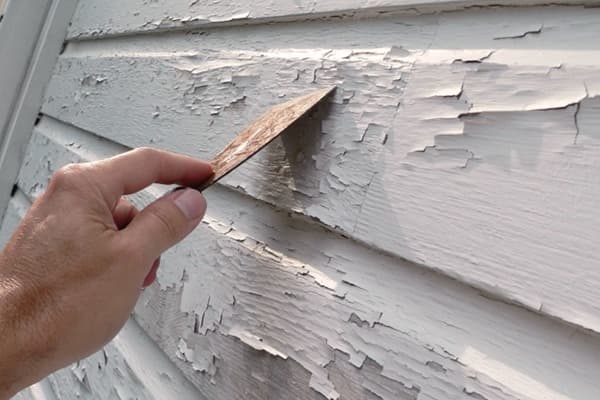ලී පැතිවලින් නිවාසවලට සදාකාලික හා ස්වභාවික ආකර්ෂණයක් ලබා දෙයි, නමුත් එය නඩත්තු කිරීම සඳහා නිතිපතා නඩත්තු කිරීම අවශ්ය වේ. නිවාස හිමියන් මුහුණ දෙන වඩාත් පොදු කාර්යයක් වන්නේ නැවුම් කබායක් යෙදීමට පෙර පැරණි තීන්ත ඉවත් කිරීම, පීල් කිරීම හෝ පිපිරවීමයි. මෙම කාර්යය සඳහා නිවැරදි තීන්ත සීරීම අත්යවශ්ය වේ. දැව පැති සඳහා හොඳම තීන්ත සීරීමට යටින් දැවයේ අඛණ්ඩතාව ආරක්ෂා කරන අතරම පැරණි තීන්ත ඵලදායී ලෙස ඉවත් කළ යුතුය. සාම්ප්රදායික අත් සීරීම් යන්ත්රවල සිට නවීන බහු-මෙවලම් දක්වා ඇති බොහෝ විකල්ප සමඟ, පැති ව්යාපෘති සඳහා වඩාත් සුදුසු වන්නේ කුමක්දැයි දැන ගැනීම වැදගත්ය.
ලී පැති සඳහා සීරීමට වැදගත් වන්නේ ඇයි?
Scraper තෝරා ගැනීමට පෙර, තීන්ත ඉවත් කිරීම ඉතා වැදගත් වන්නේ මන්දැයි වටහා ගැනීම වටී. පීල් හෝ ඉරිතැලීම් ඇති තීන්ත තෙතමනය තෙතමනයට නිරාවරණය වන අතර එමඟින් කුණුවීම, පුස් හෝ කෘමි හානි සිදු විය හැක. ලිහිල් තීන්ත නිසි ලෙස සීරීමට ප්රාථමිකය සහ තීන්ත ඇලවීම සඳහා සුමට මතුපිටක් සහතික කරයි, පැතිවල ආයු කාලය දීර්ඝ කර නිවස හොඳින් ආරක්ෂා කරයි. නිවැරදි scraper කාර්යය වේගවත් කරනවා පමණක් නොව, දැව දුර්වල කළ හැකි ගෝජ් සහ සීරීම් වළක්වයි.
ලී සයිඩ් සඳහා තීන්ත සීරීම් වර්ග
දැව පැති සඳහා විවිධ වර්ගයේ තීන්ත සීරීම් වර්ග කිහිපයක් බහුලව භාවිතා වන අතර, ඒ සෑම එකක්ම අද්විතීය වාසි ඇත:
-
අතින් ගෙන යා හැකි පැතලි සීරීම්
මෙම සම්භාව්ය සීරීම් වල හසුරුවකට සවි කර ඇති පැතලි, බෙල්වඩ් තලයක් ඇත. ඒවා කුඩා හා මධ්යම ප්රමාණයේ ප්රදේශ සඳහා දැරිය හැකි, භාවිතයට පහසු සහ ඵලදායී වේ. ඉහළ කාබන් වානේ තලයක් වඩාත් සුදුසු වන්නේ එය තියුණු දිගු කාලයක් පවතින නිසා සහ මුරණ්ඩු තීන්ත වලට එරෙහිව ශක්තිමත් උත්තේජනයක් සපයන බැවිනි. -
Scrapers අදින්න
අදින්න සීරීම් ලෙසද හැඳින්වෙන පුල් සීරීම් නිර්මාණය කර ඇත්තේ ඔබ දෙසට ඇදී යන විට කැපෙන තලයකින් ය. ඔවුන් නිශ්චිත පාලනයට ඉඩ සලසන නිසා සහ ගොරෝසු වීමේ අවදානම අඩු කරන නිසා ඒවා පැති සඳහා විශේෂයෙන් ඵලදායී වේ. සමහර ආකෘති විවිධ ලී පැතිකඩවලට ගැලපෙන පරිදි එකිනෙකට හුවමාරු කළ හැකි තල වලින් සමන්විත වේ. -
Multi-Edge Scrapers
මෙම බහුකාර්ය මෙවලම්වල විවිධ සමෝච්ඡයන් සඳහා හැඩැති බහු දාර හෝ ප්රතිස්ථාපනය කළ හැකි තල ඇත. ලී පැතිවල බොහෝ විට කට්ට, බෙල්ව හෝ අලංකාර ටිම් ඇති අතර, පැතලි සීරීම් කෙටි වන මෙම උපක්රමශීලී ස්ථාන බහු-දාර සීරීමකට හැසිරවිය හැක. -
බල-උපකාර scrapers
විශාල පැති ව්යාපෘති සඳහා, බලයෙන් ක්රියා කරන සීරීම් හෝ දෝලනය වන බහු මෙවලම් scraper ඇමුණුම් සමඟ කාලය ඉතිරි කර ගන්නා අතර උත්සාහය අඩු කරයි. වඩා මිල අධික වුවද, මුරණ්ඩු තීන්ත ස්ථර ඉවත් කිරීම සඳහා ඒවා විශිෂ්ටයි. අධික පීඩනයකින් දැව හානි නොකිරීමට වගබලා ගත යුතුය.

හොඳම Scraper හි සොයා බැලිය යුතු විශේෂාංග
දැව පැති සඳහා හොඳම තීන්ත scraper තෝරාගැනීමේදී, පහත සඳහන් ගුණාංග සලකා බලන්න:
-
බ්ලේඩ් ද්රව්ය: ඉහළ කාබන් හෝ මල නොබැඳෙන වානේ තල කල් පවතින අතර තියුණු ලෙස දිගු වේ.
-
Ergonomic Handle: සුව පහසු ග්රහණයක් දිගු සීරීම් සැසි වලදී තෙහෙට්ටුව අඩු කරයි.
-
ප්රතිස්ථාපනය කළ හැකි තල: බ්ලේඩ් ආදේශනයට ඉඩ සලසන මෙවලම් මුදල් ඉතිරි කර කාර්යක්ෂමතාව පවත්වා ගනී.
-
තල පළල: පුළුල් තල ඉක්මනින් වැඩි ප්රදේශයක් ආවරණය කරන අතර පටු තල සවිස්තරාත්මක හෝ තද අවකාශයන් සඳහා ප්රයෝජනවත් වේ.
-
නම්යශීලී බව: තරමක් නම්යශීලී තල මතුපිටට වඩා හොඳින් ගැලපේ, විශේෂයෙන් වටකුරු හෝ අසමාන පැති මත.
ලී සයිඩ් මත තීන්ත සීරීමක් භාවිතා කිරීම සඳහා උපදෙස්
-
ගොරෝසු වළක්වා ගැනීම සඳහා දර ධාන්ය සමඟ වැඩ කරන්න.
-
පිරිසිදු ප්රතිඵල සහ අඩු උත්සාහයක් සඳහා තල තියුණු ලෙස තබා ගන්න.
-
බලහත්කාරයෙන් සීරීම වෙනුවට මධ්යස්ථ, ස්ථාවර පීඩනය යොදන්න.
-
මුරණ්ඩු ප්රදේශ සඳහා සීරීම් සමඟ ඒකාබද්ධව තාප තුවක්කු හෝ රසායනික තීන්ත ඉවත් කරන්නන් භාවිතා කරන්න.
-
සීරීම් සහ පැරණි තීන්ත සමඟ වැඩ කරන විට සෑම විටම අත්වැසුම් සහ ඇස් ආරක්ෂා කරන්න.
නිගමනය
දැව ආවරණ සඳහා හොඳම තීන්ත සීරීම යනු කාර්යක්ෂමතාව, පාලනය සහ කල්පැවැත්ම සමතුලිත කිරීමයි. බොහෝ නිවාස හිමියන් සඳහා, කාබයිඩ් තලයක් සහිත අදින්න scraper එහි නිරවද්යතාව සහ දිගු කල් පවතින තියුණු බව නිසා විශිෂ්ට තේරීමක් වේ. කට්ට සහ ටිම් පිළිබඳ සවිස්තරාත්මක වැඩ සඳහා බහු-දාර සීරීම් ඉතා අගනා වන අතර, බල-ආධාරක මෙවලම් මහා පරිමාණ ව්යාපෘති සඳහා වඩාත් සුදුසු වේ. අවසාන වශයෙන්, නිවැරදි scraper තීන්ත ඉවත් කිරීම වඩාත් සුමට කරයි, දැවයේ අඛණ්ඩතාව ආරක්ෂා කරයි, සහ වසර කල්පවත්නා අලංකාරය සහ ආරක්ෂාව සඳහා නව තීන්ත නිසි ලෙස පිළිපැදීම සහතික කරයි.
පසු කාලය: සැප්-18-2025






